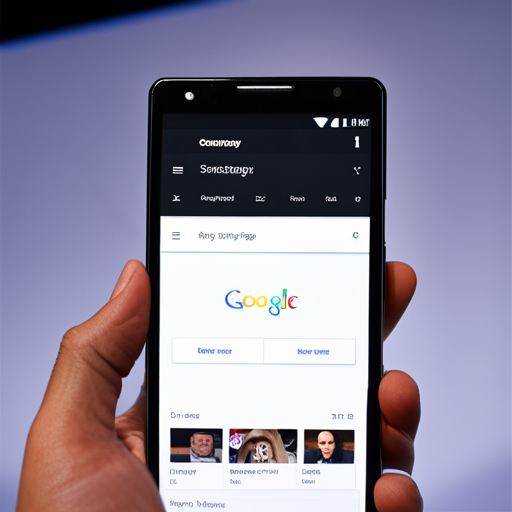Understanding the Basics of Pay-Per-Click (PPC) Advertising
Pay-Per-Click (PPC) advertising is one of the most effective ways for businesses to drive targeted traffic to their websites. Whether you’re looking to promote a new product, increase brand visibility, or generate leads, PPC can offer fast results with measurable outcomes. But to get the most out of PPC, it’s essential to understand how it works and how to use it effectively. In this article, we’ll cover the basics of PPC advertising, including what it is, how it works, and key strategies for success.
What is Pay-Per-Click (PPC) Advertising?
Defining PPC
PPC is an online advertising model in which advertisers pay a fee each time one of their ads is clicked. Essentially, it’s a way of buying visits to your site rather than attempting to earn them organically through SEO. The most popular platforms for PPC advertising include Google Ads, Bing Ads, Facebook Ads, and other social media networks.
How PPC Works
In a PPC campaign, advertisers bid on specific keywords or audiences they want to target. When someone searches for a keyword that you’re bidding on, your ad may appear at the top of the search results or on a website that’s part of a display network. The key advantage of PPC is that you only pay when someone clicks on your ad, making it a cost-effective way to reach potential customers.
Key Components of a PPC Campaign
1. Keywords
Keywords are the foundation of any PPC campaign. They are the search terms or phrases that users type into search engines. When you set up a PPC campaign, you bid on specific keywords that are relevant to your business. Choosing the right keywords involves understanding your audience’s intent and targeting terms that are likely to convert.
There are three main types of keyword matches:
- Broad Match: Displays your ad for searches that include any variation of your keywords.
- Phrase Match: Shows your ad for searches that include the exact phrase or close variations.
- Exact Match: Displays your ad only when users search for the exact term.
2. Ad Copy
Ad copy is the text that appears in your PPC ad. It should be concise, compelling, and designed to encourage clicks. A typical PPC ad includes:
- Headline: A catchy, keyword-rich title that grabs attention.
- Description: A brief summary of what you’re offering, with a strong call-to-action (CTA).
- Display URL: The link that directs users to your website or landing page.
The goal of your ad copy is to convince users that your solution is exactly what they’re looking for. Clear CTAs like “Shop Now,” “Get a Free Quote,” or “Sign Up Today” can increase click-through rates (CTR).
3. Landing Pages
Your landing page is where users arrive after clicking on your ad. A well-designed landing page is crucial for converting visitors into customers. The landing page should be relevant to the ad, offer value, and have a clear CTA.
Here are some tips for effective landing pages:
- Match the ad copy: Ensure that your landing page aligns with the message of your ad.
- Keep it simple: Make it easy for users to take action, whether that’s filling out a form or making a purchase.
- Mobile-friendly: Ensure that the page is optimized for mobile devices, as many users will click through on their phones.
Types of PPC Ads
PPC advertising isn’t limited to search engines. There are several different types of PPC ads that businesses can use depending on their goals:
1. Search Ads
Search ads are the most common form of PPC. These are the ads that appear at the top of search engine results pages (SERPs) when users search for specific keywords. Search ads are ideal for businesses that want to capture search intent and drive traffic to their websites.
2. Display Ads
Display ads appear on websites across the internet that are part of the Google Display Network or similar ad networks. These ads are typically image-based and designed to catch the user’s eye. Display ads are great for building brand awareness and retargeting users who have previously visited your site.
3. Social Media Ads
Platforms like Facebook, Instagram, LinkedIn, and Twitter offer PPC advertising options. Social media ads allow you to target users based on their demographics, interests, and behaviors. This form of PPC is particularly effective for businesses looking to engage users where they spend a lot of their time.
4. Video Ads
Video ads are displayed before or during online video content, primarily on platforms like YouTube. These ads are highly engaging and can be used for brand promotion or direct-response advertising.
How to Run a Successful PPC Campaign
1. Set Clear Goals
Before launching a PPC campaign, it’s important to define your objectives. Whether you want to increase traffic, generate leads, or boost sales, your goals will influence the structure and focus of your campaign.
2. Conduct Keyword Research
Effective keyword research is essential for PPC success. Use tools like Google Keyword Planner, SEMrush, or Ahrefs to identify relevant keywords that match user intent. It’s also important to monitor keyword performance and adjust your bidding strategy based on results.
3. Optimize Ad Copy
Your ad copy must be engaging, relevant, and focused on your audience’s needs. Conduct A/B testing on different versions of your ads to see which performs better. Test headlines, descriptions, and CTAs to find the most effective combination.
4. Set a Budget
PPC allows you to control your costs by setting a daily or monthly budget. It’s important to monitor your budget closely and adjust your bids based on the performance of your keywords. Bid too high, and you might overspend; bid too low, and your ads might not appear often enough.
5. Track and Analyze Performance
PPC platforms provide detailed analytics and reporting, which allows you to track your campaign’s success. Key metrics to monitor include:
- Click-through rate (CTR): The percentage of users who click on your ad after seeing it.
- Cost per click (CPC): The average amount you pay each time someone clicks your ad.
- Conversion rate: The percentage of users who complete a desired action (e.g., making a purchase, filling out a form).
- Return on ad spend (ROAS): The revenue generated for every dollar spent on ads.
By analyzing these metrics, you can refine your campaign and improve your return on investment (ROI).
FAQs About PPC Advertising
1. What is PPC advertising?
PPC (Pay-Per-Click) advertising is a model in which advertisers pay a fee each time their ad is clicked. It’s a way to buy visits to your website rather than earning them organically.
2. How does PPC differ from SEO?
PPC is a paid form of advertising that delivers immediate traffic, while SEO (Search Engine Optimization) focuses on improving organic (unpaid) search engine rankings over time.
3. How much does PPC advertising cost?
PPC costs vary depending on factors such as keyword competition, industry, and bidding strategy. Advertisers set their own budgets and bids, controlling how much they spend.
4. What are negative keywords in PPC?
Negative keywords are terms that prevent your ad from appearing in irrelevant searches. For example, if you sell luxury watches, you might use “cheap” as a negative keyword to avoid unwanted clicks.
5. Can I run PPC ads on social media?
Yes, social media platforms like Facebook, Instagram, LinkedIn, and Twitter offer PPC advertising options. These ads allow you to target specific demographics and interests.
6. How do I measure PPC performance?
PPC performance is measured through metrics like click-through rate (CTR), cost per click (CPC), conversion rate, and return on ad spend (ROAS). These metrics help determine the success of your campaign.
7. How long does it take to see results from PPC?
PPC can deliver immediate traffic, with results typically visible within hours or days of launching a campaign. However, optimization over time is key to improving conversions and ROI.
8. Can PPC help with brand awareness?
Yes, PPC, especially display and social media ads, is effective for building brand awareness by putting your brand in front of a wider audience.
9. What is A/B testing in PPC?
A/B testing involves running two versions of an ad to determine which performs better. By testing different headlines, copy, or images, you can optimize your PPC campaigns for better results.
10. How do I control my PPC budget?
Most PPC platforms allow you to set a daily or monthly budget, and you only pay when someone clicks your ad. You can also adjust bids to control how much you’re willing to spend on each click.
Conclusion
PPC advertising is a powerful tool for driving traffic, generating leads, and boosting sales in a cost-effective manner. By understanding the basics of PPC, including how to choose the right keywords, craft compelling ads, and optimize for conversions, businesses can create highly effective campaigns. Whether you’re just starting with PPC or looking to improve your current efforts, following the steps outlined above will help you maximize your ROI and achieve your marketing goals.












